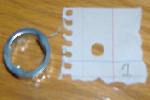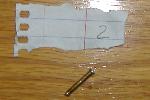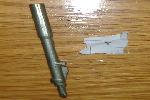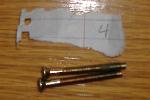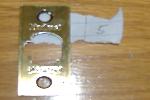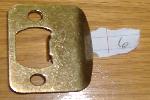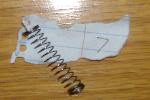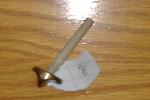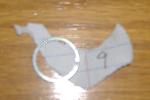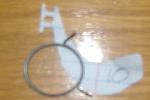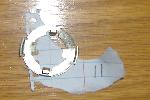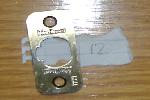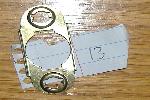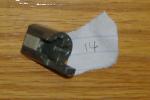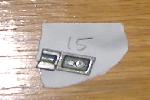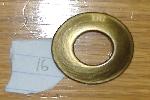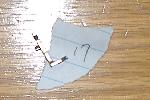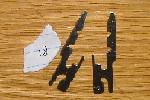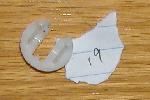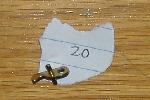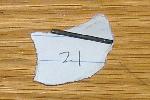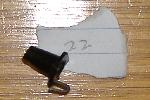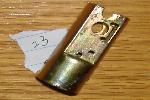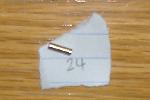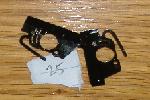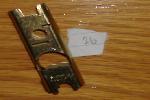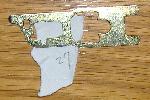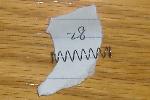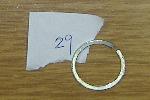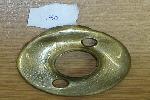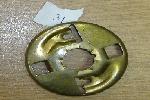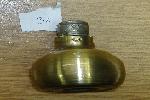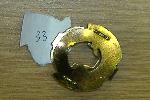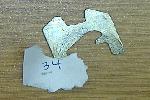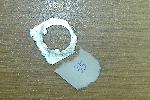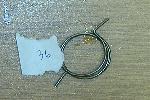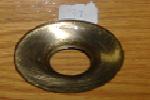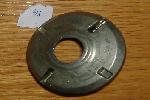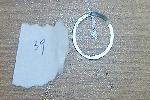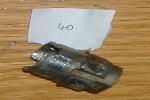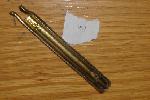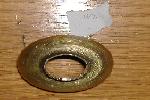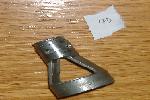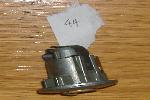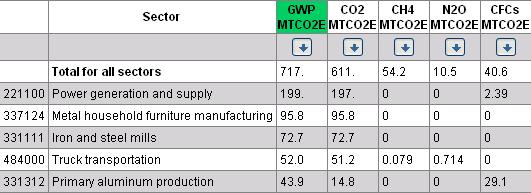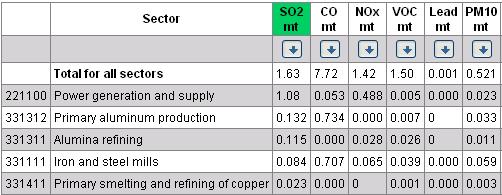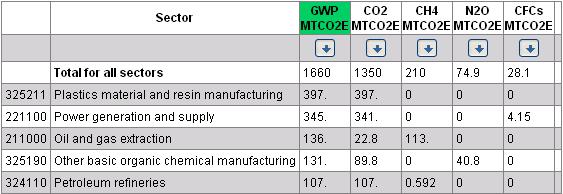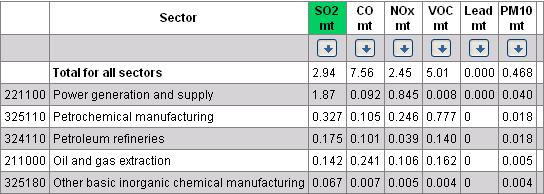Babyproof door knob lock
From DDL Wiki
(→DFE) |
(→DFE) |
||
| Line 250: | Line 250: | ||
[[Image:DoorknobCover_DFE_Greenhouse.JPG]] | [[Image:DoorknobCover_DFE_Greenhouse.JPG]] | ||
| - | Figure | + | Figure 6 EIOLCA data for greenhouse gas emissions |
[[Image:DoorknobCover_DFE_Conventional.JPG]] | [[Image:DoorknobCover_DFE_Conventional.JPG]] | ||
| - | Figure | + | Figure 7 EIOLCA data for conventional air pollution |
[[Image:DoorknobCover_DFE_Energy.JPG]] | [[Image:DoorknobCover_DFE_Energy.JPG]] | ||
| - | Figure | + | Figure 8 EIOLCA data for energy consumption |
{| class="wikitable" border="1" | {| class="wikitable" border="1" | ||
Revision as of 00:00, 24 September 2007
Contents |
Executive Summary
Babyproof door knob locks are a common method in many households to restrain children within a certain area. This information page analyzes both the babyproof lock in addition to type of door knob to which it is attached. By fully understanding the consumer needs in addition to the exact function and manufacturing methods of the system under study our team hopes to innovate and improve upon products already available for purchase. By not only analyzing the babyproofing cover but also studying the complex mechanism of the doorknob itself, this study is provided extra depth.
A doorknob's primary purpose is to allow selective entry and exit between connected rooms. This simple of objective has evolved a complex mechanism with many points for possible failure. Locking and unlocking, the doorknob-to-door interface, and even the impact of rotation must be accommodated by the doorknob within a reasonable failure tolerance. Via product dissection, a deeper understanding of each item of the assembly is gained. FMEA allowed possible failure areas to be outlined and ranked while DFMA structured possible improvements in a systematic fashion.
A babyproof door knob lock's initial simplicity is complicated by its defined interaction with the doorknob mentioned previously. Deconstruction and analysis must always take into consideration what effect each component has upon a doorknob. Varying standards in size, quality and complexity of doorknobs themselves complicate the manufacture of the door knob locks. By combining the information from both of these products, a comprehensive improvement plan can be produced that minimizes parts and cost while maximizing effectiveness.
Customer Needs
A customer with a toddler needs to safeguard their home while the child is in a stage where they want to explore their surroundings and abilities but are unaware of hidden dangers. To deter a child from opening or closing a door but still make it as accessible to normal adult traffic as possible, a special mechanism is needed, potentially on the doorknob. Customers need to also take into consideration the type of door knob (knob, lever, etc.), it's size, shape, and whether or not the knob has a lock that they also want to easily access in other situations.
Product Use
An uncovered, unlocked doorknob is simply turned to open or close a door. To deter a small child from doing so, there are two different types of covers we're exploring. The first is specifically for round doorknobs. It covers the knob loosely so that it spins freely unless tabs are pressed on its side that creates friction between the cover and knob, causing the knob to turn when the cover is turned. The second is for levers. There is a lever cover and a "lock". This lock is a latch that is attached to the door above the knob with a tab that fits into a notch in the cover. The tab prevents the cover from moving unless the tab is lifted.
System Function
(include pictures)
Bill of Materials (Doorknob)
DFMA
FMEA
| Material/Analysis | Doorknob | Doorknob Protector |
|---|---|---|
| Who Are the Stake Holders? |
Homeowners and families
| |
| What it Does and How it is Used |
Secures a door
|
Potential Failures
- If latch disconnects or mis-aligns, door does not open
- Loosening of the knob
- Material fatigue
- Rusting and sticking
- Loss of spring constant
How Failure Affects Consumers
- Doorknob becomes difficult or impossible to operate
- Doors may or may not be opened
- Repair or replacement
How Dangerous the Failures Would Be
- Cannot leave room during an emergency
- No longer reserving privacy
- Small parts may be swallowed by children
How Likely/Often Failure Would Occur
- 5~60 years
FMEA (doorknob protector)
i think we should combine the FMEA's (doorknob and doorknob protector) into a chart...
don't edit anything under the FMEA's yet, i'll get back to it tomorrow~
Quantitative Mechanical Analysis
DFE
The analysis for this section is broken down into DFE for the doorknob and DFE for the doorknob protector. The first analysis consists of just the doorknob. The following tables show the data obtained using the 1997 purchaser price model in the EIOLCA for $1 million worth of “Metal household furniture manufacturing”
Figure 1 EIOLCA data for toxic gas emissions
Figure 2 EIOLCA data for greenhouse gas emissions
Figure 3 EIOLCA data for conventional air pollution
Figure 4 EIOLCA data for energy consumption
The accuracy of these approximations is fairly rough as doorknobs do not necessarily take part in all sectors that contribute to certain areas, ie paper mills & copper smelting. However, this data gives a rough idea of sectors that have the largest effect on environmental areas.
The following DFE is for the doorknob protector. The following tables show the data obtained using the 1997 purchaser price model in the EIOLCA for $1 million worth of “Plastic material and resin manufacturing”
Figure 5 EIOLCA data for toxic gas emissions
Figure 6 EIOLCA data for greenhouse gas emissions
Figure 7 EIOLCA data for conventional air pollution
Figure 8 EIOLCA data for energy consumption
| Production | Transportation | Use | End of Life |
|---|---|---|---|
| cell 1,1 | cell 1,2 | blank | blank |
| cell 2,1 | cell 2,2 | blank | blank |
Bill of Materials (doorknob protector)
| # | Name | Origin | Weight | Material | Manufacturing Technique | Function |
|---|---|---|---|---|---|---|
| 45 | blank | blank | -- | blank | blank | blank |
| 46 | blank | blank | -- | blank | blank | blank |
| 47 | blank | blank | -- | blank | blank | blank |
| 48 | blank | blank | -- | blank | blank | blank |
| 49 | blank | blank | -- | blank | blank | blank |
| 50 | blank | blank | -- | blank | blank | blank |
24-441 Engineering Design Course, Fall 2007, Carnegie Mellon University
